Idea by
Anna Yudina
Call for ideas 2018
URBANATURE
URBANATURE
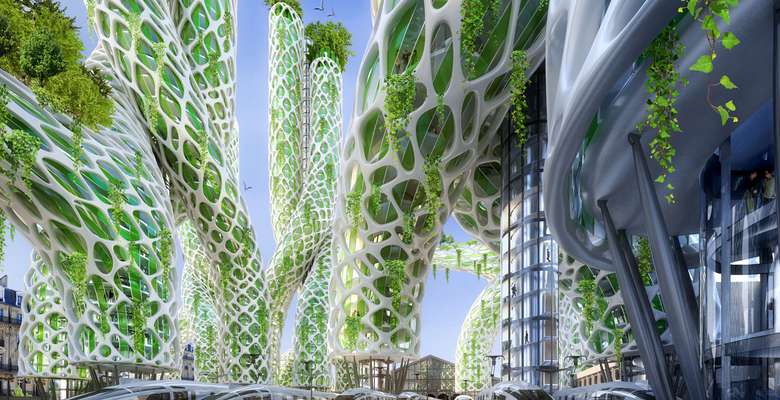
Juxtaposing City and Nature is unproductive. Allowing for their mutually-reinforcing coexistence makes better sense.
Trailblazers across the world are testing new concepts of integrating nature in the urban fabric so that natural and man-made systems could merge and cooperate. Just a few ongoing projects: XTU architects with scientists and manufacturers develop a facade system that incorporates the production of one of the most valuable raw materials, microalgae, while enabling passive climate control inside the building. New types of concrete support the growth of plants, transforming buildings into air purifiers. Breathe.austria deploys a 560m2 'augmented forest' to lower interior temperature by 5-7°C and produce as much oxygen as some 3 ha of a regular forest. Architect Ferdinand Ludwig is testing the use of living trees as structural supports.
Let’s look into the new architecture that results from this approach, and see how nature/architecture hybrids can reshape our cities.
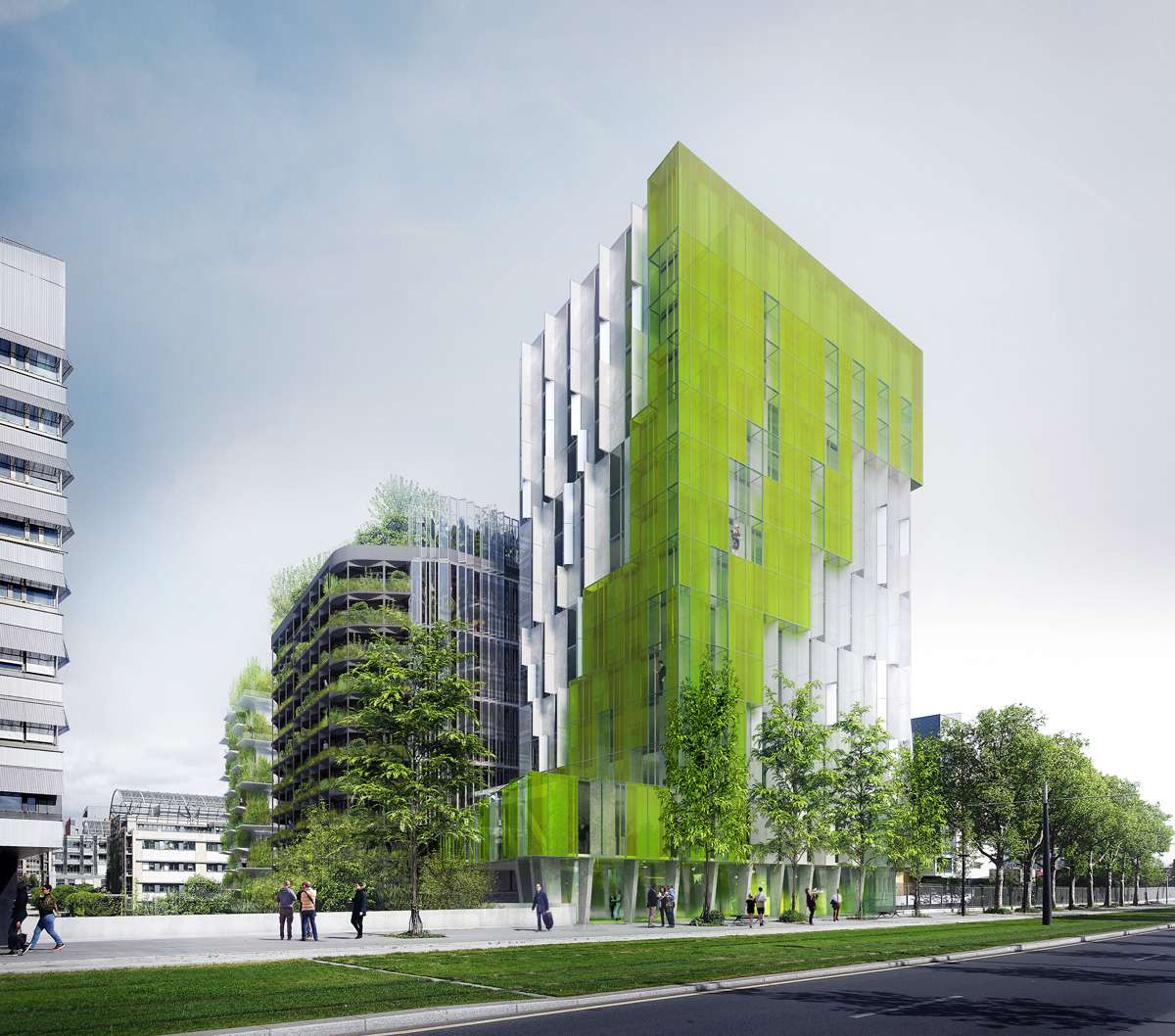
Main image: Mangrove Towers from the Paris Smart City 2050 study. Commissioned by the Paris City Council; developed by architect Vincent Callebaut & bioclimatic engineers from SETEC.
This image: Developed by a consortium of laboratories & manufacturers led by X-TU architects, Biofaçade is a modular space-saving solution for farming one of the world’s most valuable raw materials, microalgae, in the city. While making buildings productive, Biofaçade also passively controls the interior climate.
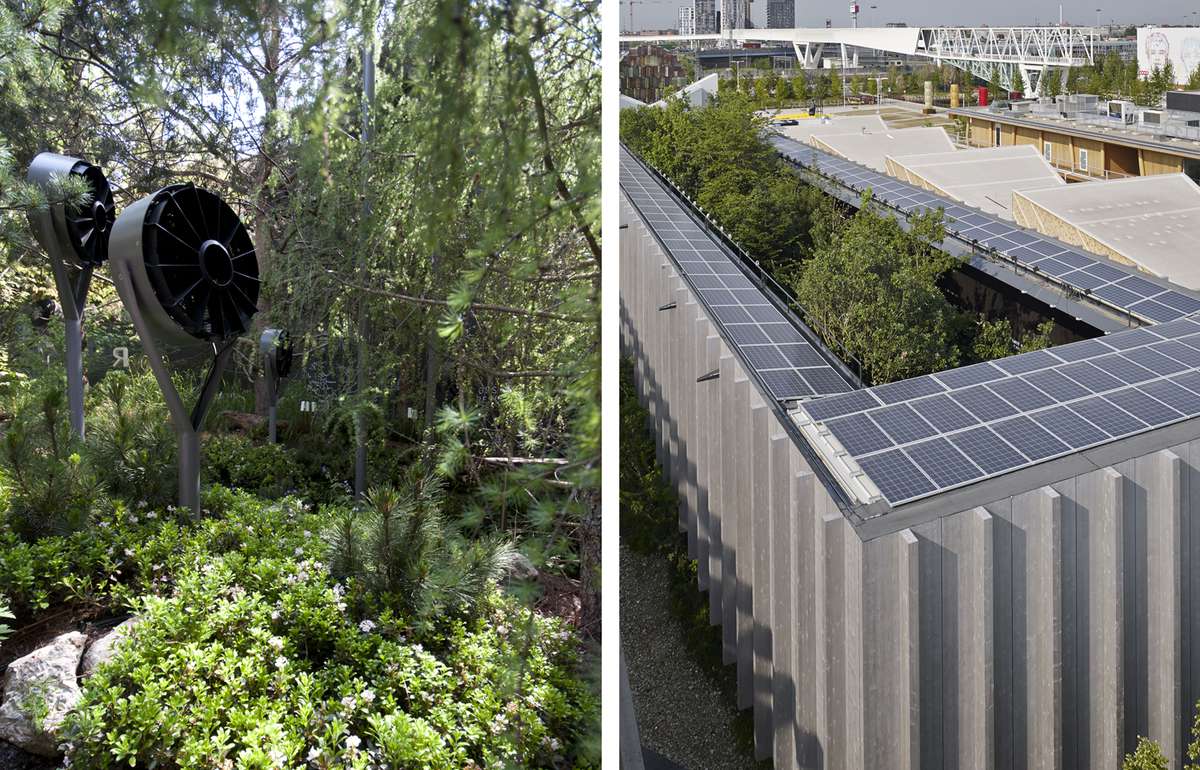
The breathe.austria pavilion for Milan Expo 2015 hosted a 560m2 forest in which natural processes were enhanced by misting and ventilating machines powered by a new type of photovoltaic panels. Without a single air conditioner, a small patch of 'augmented forest' reduced interior temperature by 5-7°C. Its hourly oxygen output was equal to that of a regular forest 50 times as big. This was only possible with a hybrid design. Imagine a network of such oases in hot and polluted mega-cities...
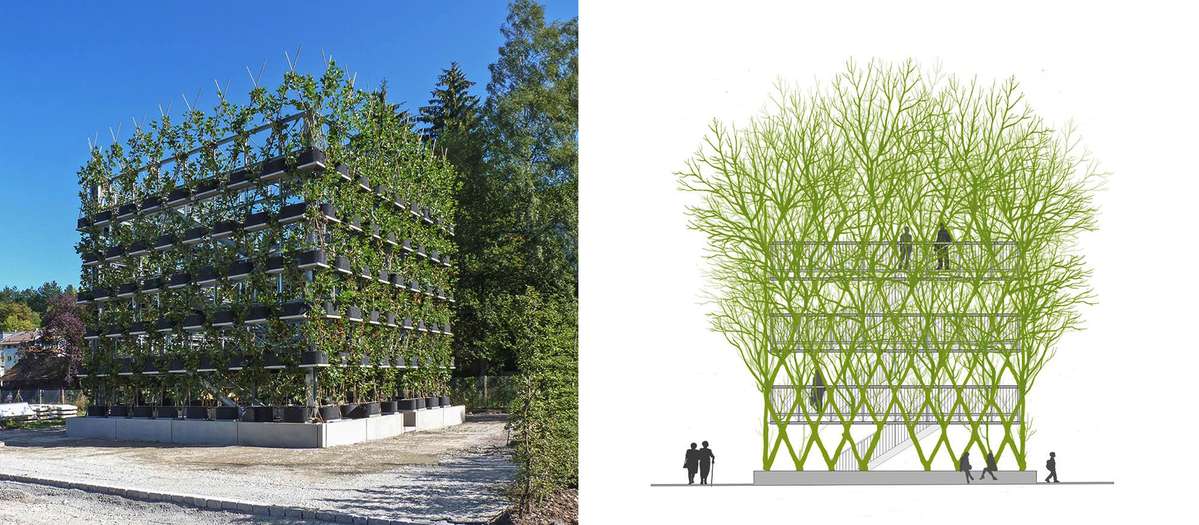
Platanenkubus is an example of botanical architecture, or baubotanik, in which plants play an active structural part and which aims "to overcome the separation between the technical world and the living, growing world." This 10 m high "living structure" has been developed by Ferdinand Ludwig and Daniel Schönle specifically for urban conditions. It may take some 20 years, but then the trees will be able support the structure all on their own.
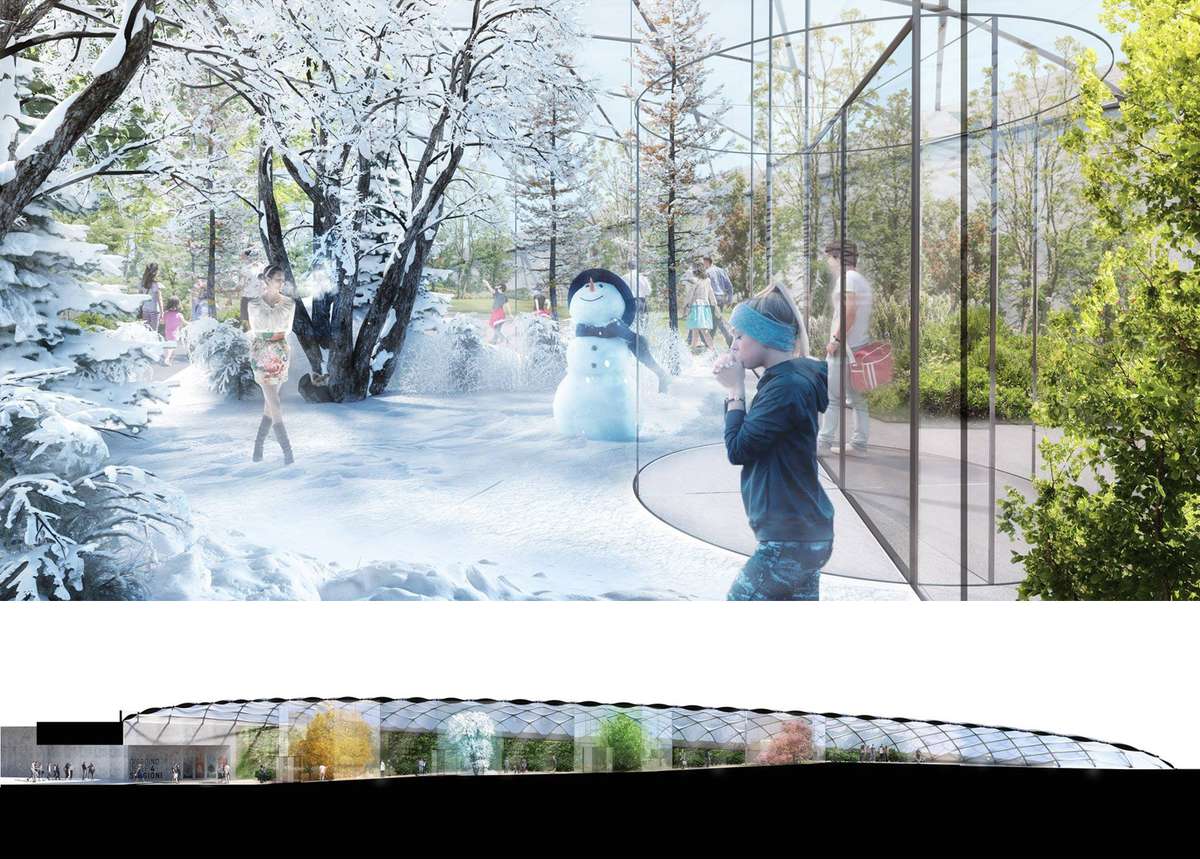
Based on a concept by Dr. Barbara Römer and designed by Carlo Ratti Associati for a new neighbourhood in Milan, this covered garden uses an innovative, high precision climate control system to allow four seasons coexist at any moment of the year. "By constantly adjusting two main components - lighting levels and heat - the system allows the plants’ metamorphosis to follow the different seasonal cycles," the architects explain.
URBANATURE
URBANATURE

Juxtaposing City and Nature is unproductive. Allowing for their mutually-reinforcing coexistence makes better sense.
Trailblazers across the world are testing new concepts of integrating nature in the urban fabric so that natural and man-made systems could merge and cooperate. Just a few ongoing projects: XTU architects with scientists and manufacturers develop a facade system that incorporates the production of one of the most valuable raw materials, microalgae, while enabling passive climate control inside the building. New types of concrete support the growth of plants, transforming buildings into air purifiers. Breathe.austria deploys a 560m2 'augmented forest' to lower interior temperature by 5-7°C and produce as much oxygen as some 3 ha of a regular forest. Architect Ferdinand Ludwig is testing the use of living trees as structural supports.
Let’s look into the new architecture that results from this approach, and see how nature/architecture hybrids can reshape our cities.
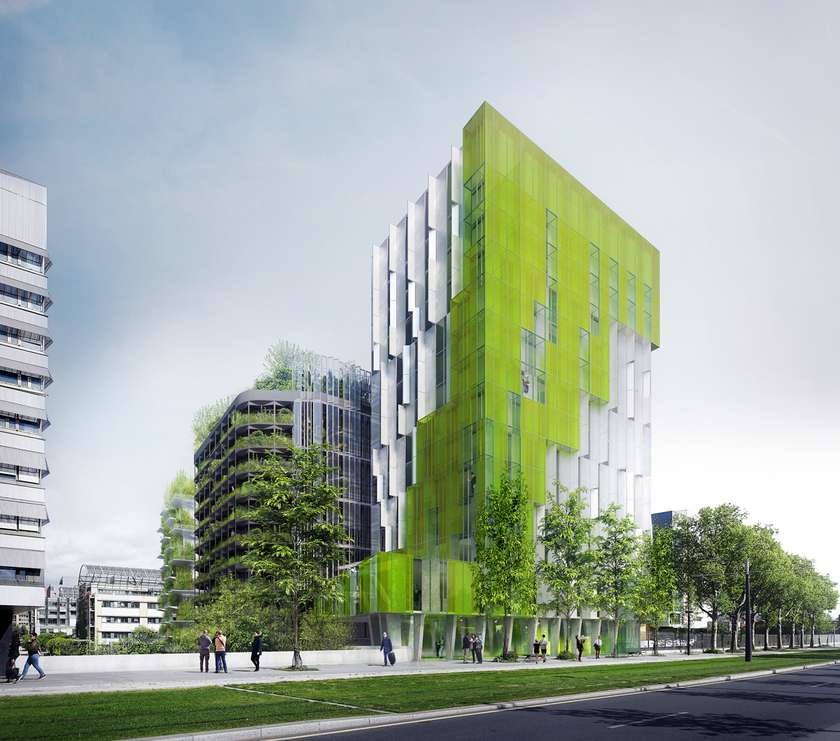
Main image: Mangrove Towers from the Paris Smart City 2050 study. Commissioned by the Paris City Council; developed by architect Vincent Callebaut & bioclimatic engineers from SETEC.
This image: Developed by a consortium of laboratories & manufacturers led by X-TU architects, Biofaçade is a modular space-saving solution for farming one of the world’s most valuable raw materials, microalgae, in the city. While making buildings productive, Biofaçade also passively controls the interior climate.
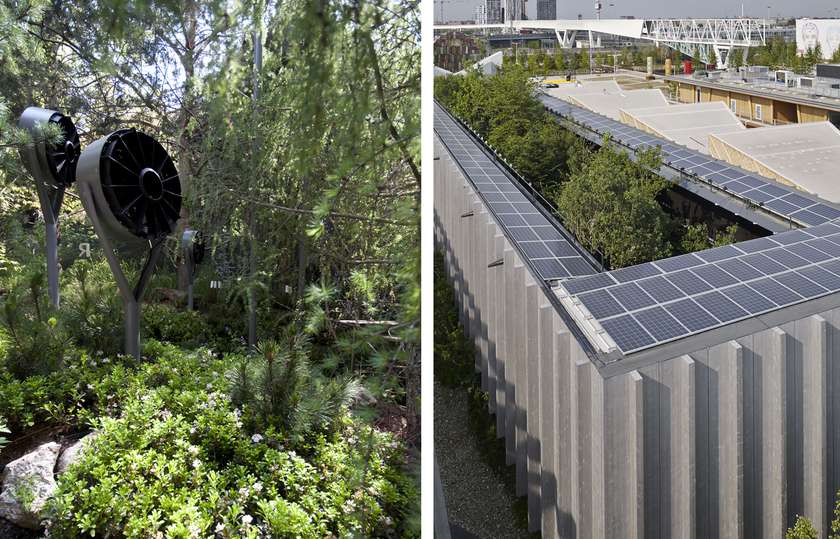
The breathe.austria pavilion for Milan Expo 2015 hosted a 560m2 forest in which natural processes were enhanced by misting and ventilating machines powered by a new type of photovoltaic panels. Without a single air conditioner, a small patch of 'augmented forest' reduced interior temperature by 5-7°C. Its hourly oxygen output was equal to that of a regular forest 50 times as big. This was only possible with a hybrid design. Imagine a network of such oases in hot and polluted mega-cities...
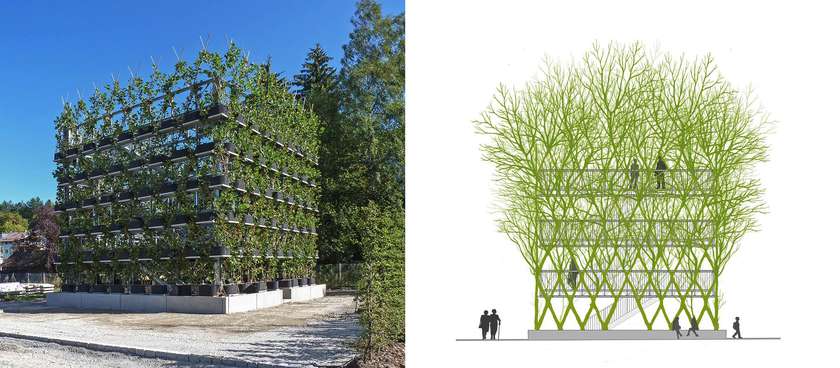
Platanenkubus is an example of botanical architecture, or baubotanik, in which plants play an active structural part and which aims "to overcome the separation between the technical world and the living, growing world." This 10 m high "living structure" has been developed by Ferdinand Ludwig and Daniel Schönle specifically for urban conditions. It may take some 20 years, but then the trees will be able support the structure all on their own.
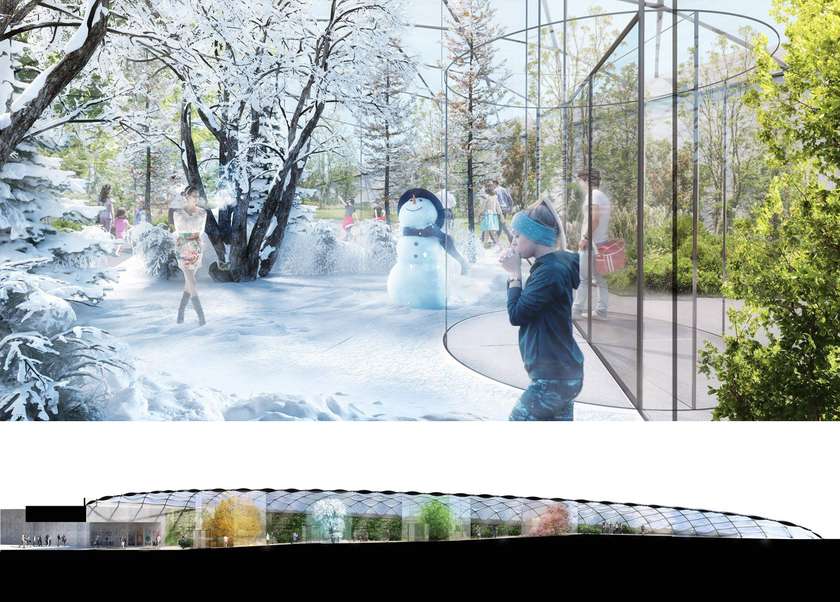
Based on a concept by Dr. Barbara Römer and designed by Carlo Ratti Associati for a new neighbourhood in Milan, this covered garden uses an innovative, high precision climate control system to allow four seasons coexist at any moment of the year. "By constantly adjusting two main components - lighting levels and heat - the system allows the plants’ metamorphosis to follow the different seasonal cycles," the architects explain.